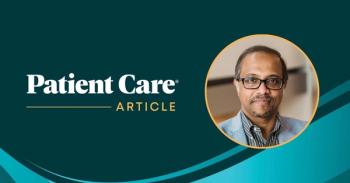
IAS: HIV Microbicide Failure Remains A Puzzle
SYDNEY -- Investigators remain puzzled about why a supposedly safe anti-HIV microbicidal gel turned out to increase the risk of HIV in women who used it.
SYDNEY, July 26 -- Investigators remain puzzled about why a supposedly safe anti-HIV microbicidal gel turned out to increase the risk of HIV in women who used it.
The gel, whose active ingredient was sodium cellulose sulfate, was extensively tested before a pivotal four-country phase III trial, according to Lut Van Damme, M.D., Ph.D., of CONRAD, a reproductive health organization based in Arlington, Va.
But at a planned interim analysis in January, the study's independent data monitoring committee found evidence that the compound was significantly increasing the HIV risk and halted the trial. (See
"We did not and do not have an explanation," Dr. Van Damme told attendees at the International AIDS Society meeting here. "It was a shock to all of us."
A parallel study in Nigeria, run by Family Health International in Research Triangle Park, N.C., was stopped at the same time, although a researcher said here that there was no sign of harm in that trial.
Dr. Van Damme said she and colleagues are trying to test three hypotheses:
- The gel may have stimulated HIV capture through an interaction with what is called DC-SIGN, a recently discovered protein that can bind HIV and may deliver it to its target cells.
- Repeated use of the gel may have caused a sub-clinical inflammatory response.
- Or the gel may have disturbed the vaginal microflora, despite no sign in earlier studies that it does so, and somehow made it easier for HIV to invade.
The gel, dubbed Ushercell, was delivered in single-use opaque applicators delivering 3.5 milliliters, to be used one hour before each intercourse, Dr. Van Damme said.
The blinded, placebo-controlled trial was intended to enroll more than 2,500 HIV-negative women, although when the study was stopped only 1,428 had been randomized.
The interim analysis was triggered in late January after 33 women in the study had become HIV-positive, she said. The data monitoring committee found that 24 women in the gel arm and 11 in the placebo arm had been infected with HIV.
The risk ratio, based on those numbers was 2.23, with a 95% confidence interval from 1.05 to 5.03, which was significant at P=0.022, Dr. Van Damme said.
A final intention-to-treat analysis, conducted later, was slightly less worrisome: There were 25 infections in the gel arm and 16 in the placebo arm, for a risk ratio of 1.61, which was no longer significant.
On the other hand, Dr. Van Damme said, there was also no benefit.
The Nigerian study, using the same compound, also showed no benefit at the time it was stopped, according to Willard Cates, Jr., M.D., of Family Health International.
He said the Nigerian study was stopped because of the concerns raised by the CONRAD study, but a later intention-to-treat analysis showed only 10 HIV infections in the gel arm and 13 in the placebo arm, which was not significantly different.
Dr. Cates said later that "because of statistical limitations, (the studies) really overlap in terms of what their findings were."
He noted that the Nigerian study -- because of unsettled conditions in the region -- had a much larger population lost to follow-up. Had those participants been included, he said, the Nigerian study might have had similar results to the CONRAD trial.
"We certainly could not find any significant protective effect," he said. "We decided to err on the side of caution."
Newsletter
Enhance your clinical practice with the Patient Care newsletter, offering the latest evidence-based guidelines, diagnostic insights, and treatment strategies for primary care physicians.


















































































































































































































































































